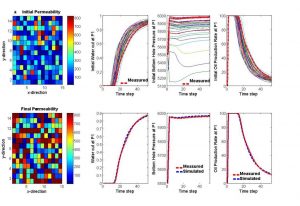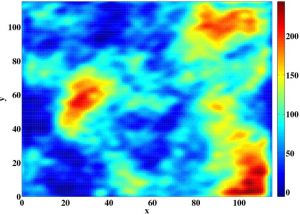Reservoir software simulators, after many years of development, have matured and are practically applied in different oil and gas fields all over the world. The simulator has a differential equation solver that can integrate the reservoir dynamics over time, and can be used for reservoir management optimization. In order for a simulator to work, all the reservoir parameters need to be known. These reservoir parameters include the fluid and rock properties at all the locations in the reservoir, e.g the permeability and the porosity in all of reservoir. Usually, the rock properties cannot be directly measured in most of the field (e.g. the inter-well locations). A fundamental step in reservoir modeling, management, and/or optimization is the estimation of all the reservoir parameters at all locations in the field. The information used to estimate the reservoir parameters are the measurements collected since the beginning of oil/gas production. These measurements usually include production and pressure data at each producer and injector, collected over time, since the reservoir production start date. The criterion for estimating the reservoir parameters is to find their values such that when the reservoir is simulated, the simulated measurements will best fit the actual measurements. This process for estimating the reservoir parameters is called “History Matching”.
Research is being conducted in Dr. Abdelkhalik’s group on different techniques of optimal parameters estimation for history matching. These are:
- Novel implementation for Evolutionary Algorithms
- Novel implementation for the Ensemble Kalman filter
- Reservoir parameterization


